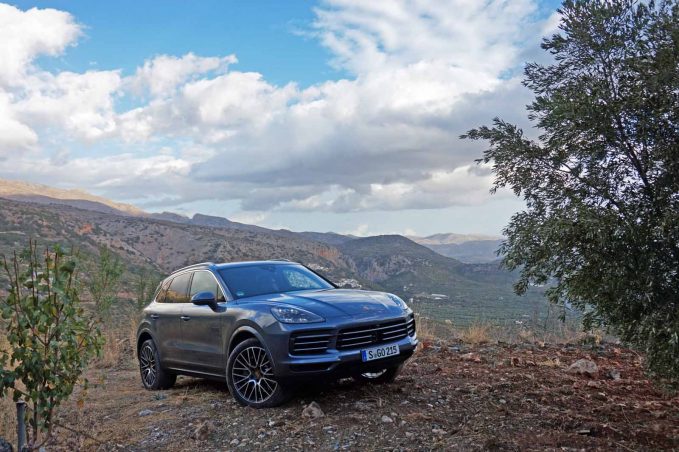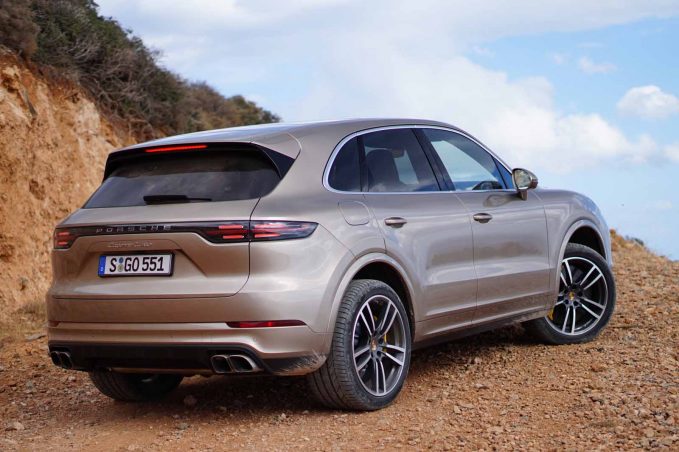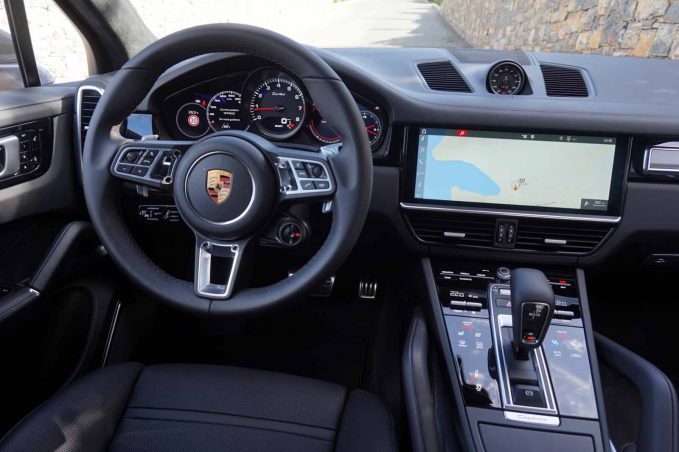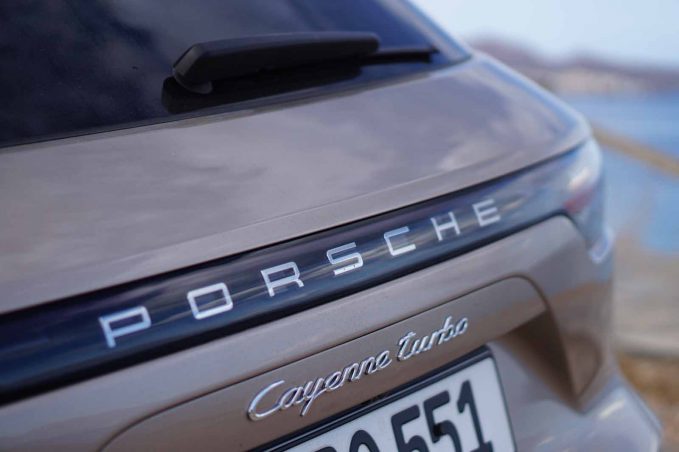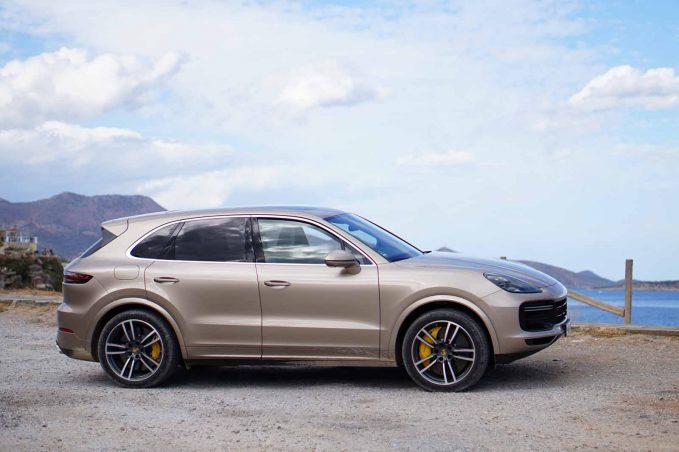Improving on a good thing to make it a great thing requires an intense dedication that most people and automakers don’t have the discipline for.
Luckily the Germans at Porsche are some of the most disciplined in the industry and they have been hard at work revamping an already impressive vehicle to bring you the even better third-generation 2019 Porsche Cayenne.
Porsche took a holistic approach to improving every single aspect of the Cayenne, leaving nothing untouched. The new SUV is lighter, smarter, better to drive, more attractive, more connected, has more technology than ever, and is also more user-friendly.
The Drive
The Cayenne has always been a star to drive (Porsche calls it the sports car of its segment, which is hard to argue with), so it’s impressive that the automaker was able to improve on it. The better driving dynamics start with a dedication to weight reduction. The base Cayenne is 121 pounds (55 kilograms) lighter than before, while the Cayenne S is a whopping 143 lb (65 kg) lighter, and the Turbo is 22 lb (10 kg) lighter, even though it has more standard equipment. Its newfound lightness is complemented by a host of new technology that makes the SUV more versatile in a wide range of driving situations. There’s almost too much tech to go through, but a few things stand out because they make a huge difference.
ALSO SEE: 2018 Land Rover Range Rover Velar First Drive Review
First is the availability of rear-axle steering, which makes the car feel smaller than it actually is. At slow speeds, the rear-axle steering reduces the effort needed to park, U-turn, and maneuver around tight spots, while at high speeds, the system offers increased stability. In corners, however, it gives the big Cayenne the ability to change direction in a way that’s more sports car than SUV. Agility isn’t really a strong suit of SUVs, but this is a Porsche, after all.
Driven around the Crete island of Greece on terrifyingly twisty, narrow mountain roads built for goats and little subcompacts, the Cayenne should have felt ponderous but instead displayed a refreshing eagerness to dive into switchbacks and confidently change direction. It was easy to forget that there was all that car behind you. The precise and heavy steering also helps make things more enjoyable.
Other features worth mentioning are the versatile new three-chamber air suspension, electric anti-roll stabilization for flatter cornering, new surface-coated brakes for increased friction and less fade, the industry’s first active roof spoiler and air brake for an SUV — all combine to make the car simultaneously sportier and more comfortable, two things that normally don’t go together.
ALSO SEE: 2018 Porsche 911 GT3 First Drive Review
Power for the base Cayenne comes from a 3.0-liter turbo V6 with 340 horsepower and 332 pound-feet of torque. In the Cayenne S, the 2.9L twin-turbo V6 outputs 440 hp and 406 lb-ft of torque. The Turbo model is powered by a 4.0L twin-turbo V8 with 505 hp and 567 lb-ft of torque.
In all three models, power is routed to all four wheels via a snappy eight-speed Tiptronic transmission. In the base Cayenne, acceleration is exceedingly quick, getting to 62 mph (100 km/h) in 6.2 seconds, while the Cayenne S does it in 5.2 seconds. With the Turbo, it becomes brutally fast, getting to 62 mph (100 km/h) in just 4.1 seconds. All those times get even faster with the Sport Chrono package, which allows drivers to unlock 20 seconds of increased responsiveness at the push of a button for passing or maybe even just for thrills.
Style
There’s no denying that this new Cayenne would be embarrassed to see itself as a first-generation model in 2002, kind of like that photo of your fatter and more awkward self in high school that your mom loves to share on Facebook. But just like you’ve grown into a sophisticated, successful, and decidedly more attractive person, the Cayenne has really found its footing in the styling department. With its 911 DNA more evident now, the Cayenne has a sharp new style and great proportions that give it a noticeable presence on the road.
The front and side of the SUV don’t look too different, but the rear is where the designers seemed to focus. The futuristic light bar connecting the 911-like tail lights that stretches across the whole back side is probably the most dramatic change. I’m not a huge fan of the big gaping air intake and grille treatment in the front bumper, but the rest of it looks pretty good.
The rest of the changes to the new Cayenne’s design are more subtle. Although the whole thing looks leaner all around, the SUV is shorter, wider and longer than before, which all combines to give it a sportier, more planted look.
Interior
Porsche promises those ne
w dimensions didn’t impact passenger or cargo room. The back seat passengers still get plenty of leg and headroom and the trunk has room for 27.2 cubic feet (770 L) of cargo and 60.4 cu-ft (1,710 L) with the seats down. Up front, drivers are treated to excellent visibility and a spot-on driving position that gives a commanding view of the road without making it seem like you’re sitting on a bar stool. The seating feels no different than what you’d get in a Panamera, which is a good thing.
The interior is also dramatically improved because it gets rid of the unattractive and overwhelming wall of buttons in the center stack and replaces it with a slick panel of touch-sensitive controls. The “buttons” light up from underneath and have useful but not jarring haptic feedback and a few physical guides to make it more user-friendly. The whole system is probably one of the best button-less setups out there because it is attractive without sacrificing usability (and it doesn’t seem to attract fingerprints, which is a huge annoyance with similar systems).
The center stack is dominated by a new 12.3-inch touchscreen with a wide horizontal layout. The screen is crisp, responsive, and understands smartphone gestures like pinching and swiping, but even more importantly, the menus are intuitive to navigate and the entire system is smart, logical, and well thought out. Simple things like being able to cancel a navigation route or change the map orientation without having to go through a series of menus go a long way to keeping drivers less distracted.
ALSO SEE: 2018 Porsche 911 Carrera T is the No Frills 911 You’ve Been Waiting For
The system hides a lot of functions from the main screen but instantly brings up menus and options if you wave your hand in front of it, a clever way to cut down on visual clutter without reducing functionality.
For the driver, the new dashboard consists of one analog gauge in the middle flanked by two large digital displays that can be customized to show a variety of useful information like navigation or audio information, for example.
Features
The new Cayenne makes a big step forward in terms of connectivity. Along with a new app that allows drivers to do a variety of useful things like check up on their car’s status or even mark down where they parked it, the Cayenne is now available with an LTE internet connection. That allows it to get real-time traffic and weather updates, and enables the car to act as a mobile wifi hotspot. Apple CarPlay (no Android Auto), four USB ports, a giant panoramic sunroof, and Nest smart home connectivity are just a few features on a ridiculously long list. Of course, all the latest safety and driver assistance features are available, including adaptive cruise control with traffic jam assist, collision mitigation with active emergency braking (it even closes the windows and turns on the hazard lights if a crash is imminent and the driver isn’t responding), pedestrian detection, active lane-keep assist with traffic-sign recognition, lane-change assist, and night-vision assist with thermal imaging.
Porsche has updated its Cayenne with new off-roading modes that tailor the car’s settings depending on the terrain. The parking sensors and 360-degree camera not only makes the SUV easy to park, but it also allows drivers to keep an eye on any obstacles during off-roading. The smoothness of the brakes and throttle make it easier to drive smoothly off-road.
Pricing
For those fortunate enough to be able to afford the 2019 Porsche Cayenne, it won’t matter that pricing has gone up by a significant amount because they are getting much more car for the money and the increase probably doesn’t represent that big a dent in this price bracket anyway. The base Cayenne starts at $66,750 in the U.S. ($76,750 in Canada and all prices include destination), the Cayenne S starts at $83,950 ($93,850 in Canada), and the Cayenne Turbo starts at $125,650 ($140,950 in Canada). Of course, Porsche offers a massive catalog of options and personalization that easily drives the price into scary territory.
The Verdict: 2019 Porsche Cayenne Review
Porsche didn’t just make changes for the sake of making changes because each and every single modification is an enhancement. The Cayenne is more versatile than ever, easily becoming an effortless cruiser, a wannabe 911, or fancy off-roader depending on your mood. There was barely a downside to this big luxury SUV before, but all the improvements make that even more true.
Discuss this article on our Porsche Forum







